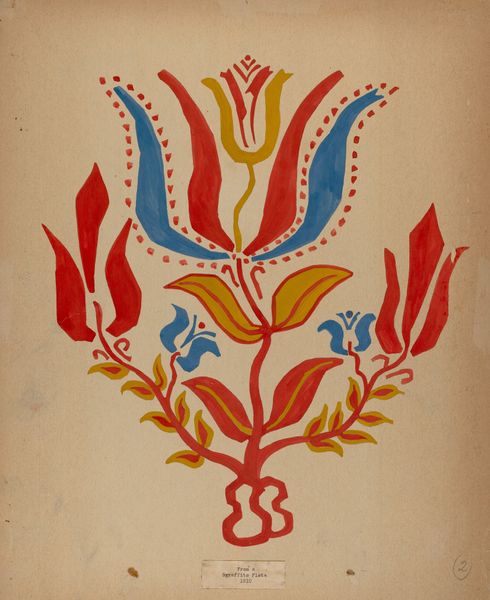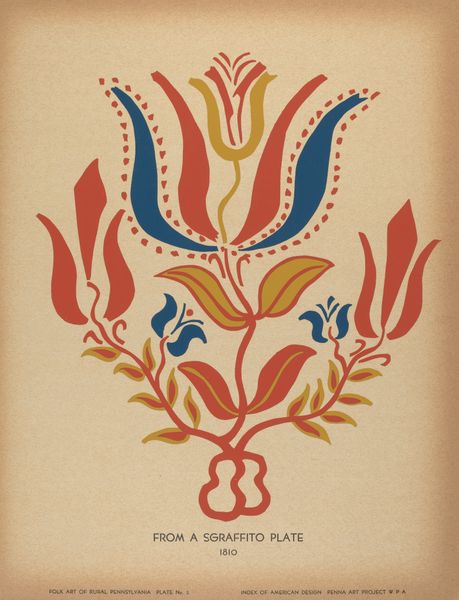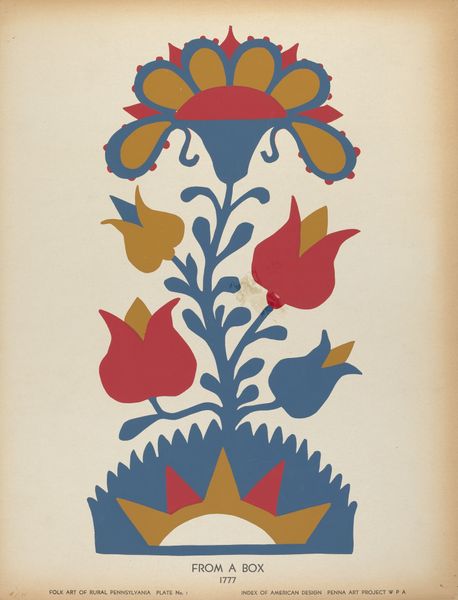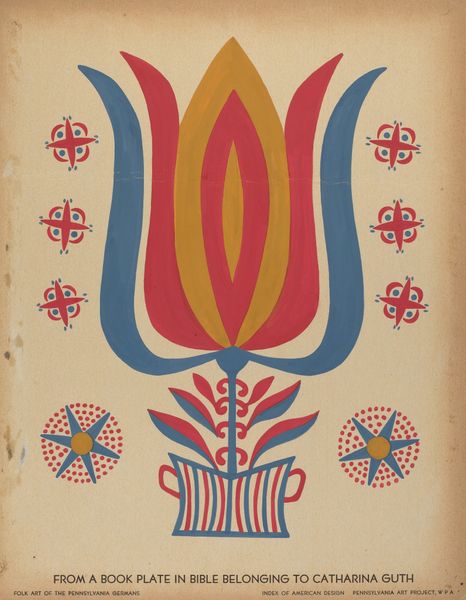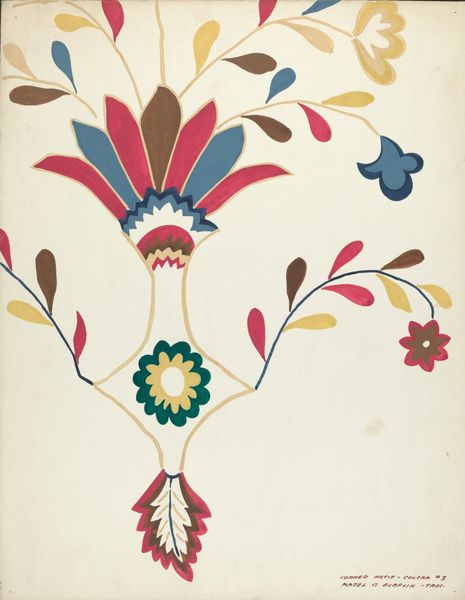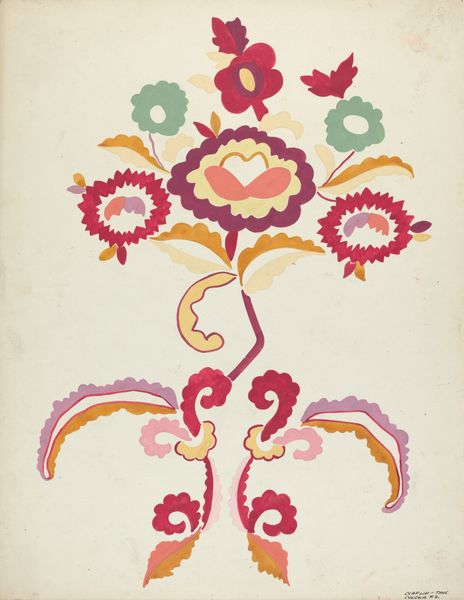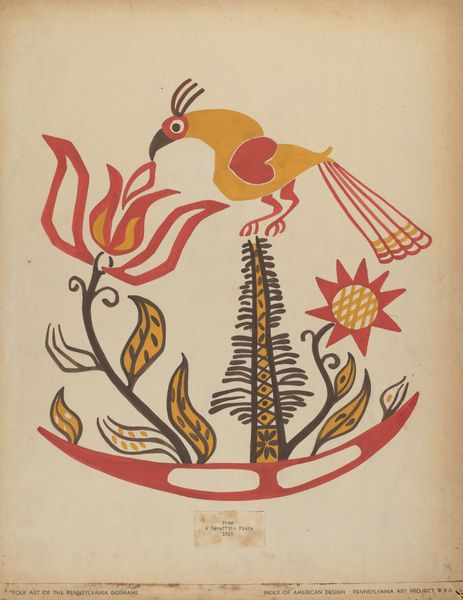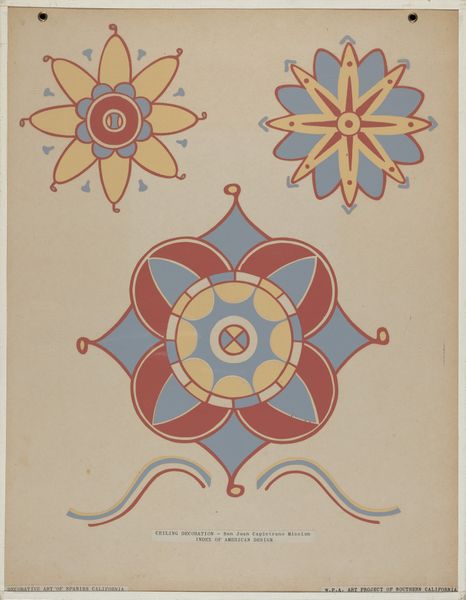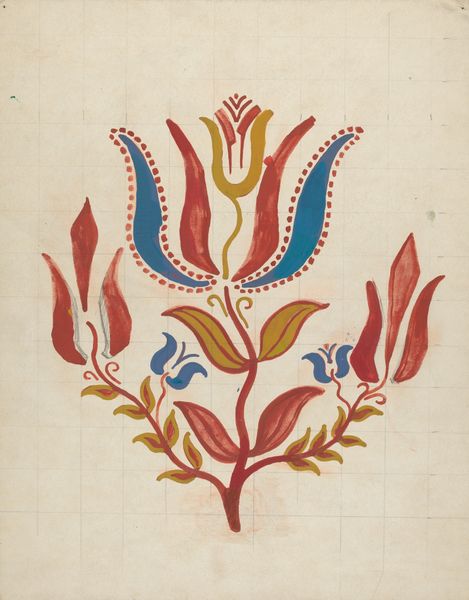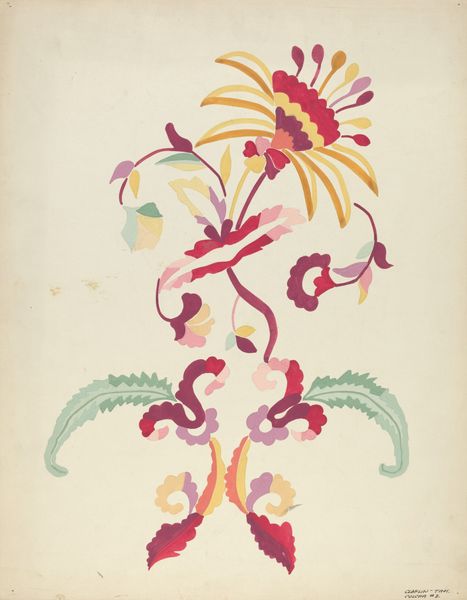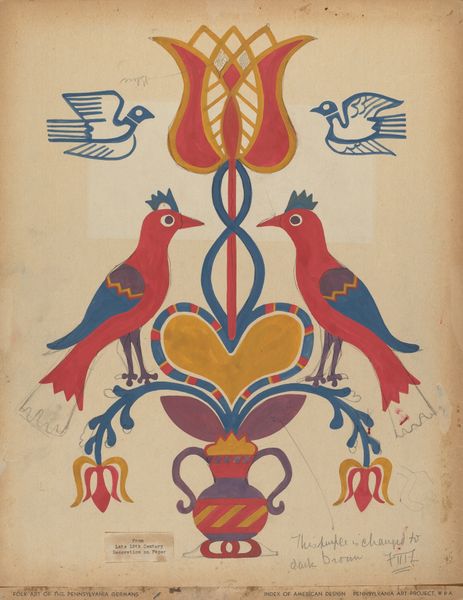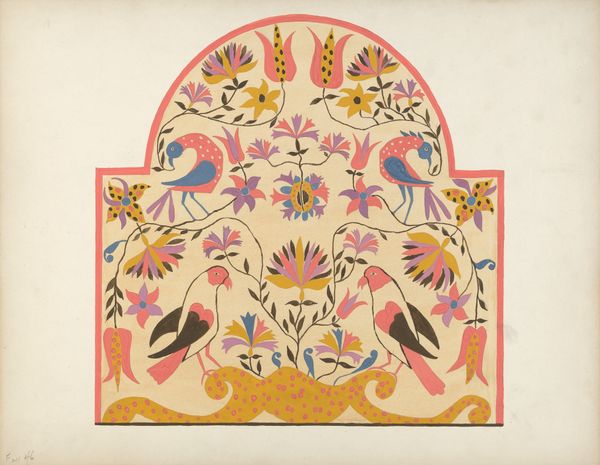
Plate 11: From the Portfolio "Folk Art of Rural Pennsylvania" c. 1939
0:00
0:00
drawing, graphic-art, print, paper
#
drawing
#
graphic-art
# print
#
paper
#
folk-art
#
geometric
#
decorative-art
Dimensions: overall: 46 x 35.6 cm (18 1/8 x 14 in.)
Copyright: National Gallery of Art: CC0 1.0
Editor: Here we have Plate 11 from the portfolio "Folk Art of Rural Pennsylvania," dating from around 1939. It’s a print on paper, recreating a design from a late 18th-century slipware plate. I’m struck by the boldness of the geometric shapes and the flat, almost graphic quality of the print. What catches your eye about this piece? Curator: Immediately, it's the formal interplay between the stylized floral and geometric motifs. Notice how the artist uses a limited palette of red, yellow, and blue to create a visually striking pattern. Consider the placement of the shapes: the large central flower, flanked by two star-like forms. How do these elements work together to create a balanced composition? Editor: I see what you mean about balance. The symmetry is clear, but there are subtle differences between the star shapes. One has more blue, the other more yellow. Is this asymmetry intentional? Curator: Precisely. The artist disrupts the perfect symmetry just enough to keep the design visually engaging. Examine the line work as well. It’s clean and decisive, defining the shapes clearly, yet possessing a slight unevenness that adds a human touch. How do you think this tension between precision and imperfection affects our reading of the work? Editor: That’s an interesting question. Perhaps it acknowledges the handmade origins of the original slipware, a nod to the folk art tradition it represents. This makes me realize the abstraction pushes it beyond pure representation. Curator: Exactly! It’s an interpretation of form rather than a direct copy. The print itself functions as a translation, transforming a three-dimensional object into a two-dimensional design, imbued with early modernist sensibility through a graphic flattening of form and shape. Editor: I hadn’t considered it in that way before. So much to consider beyond just its decorative quality! Curator: Indeed. By considering its formal elements – its composition, color, and line – we start to see its complex dialogue with both folk tradition and modern aesthetics.
Comments
No comments
Be the first to comment and join the conversation on the ultimate creative platform.
